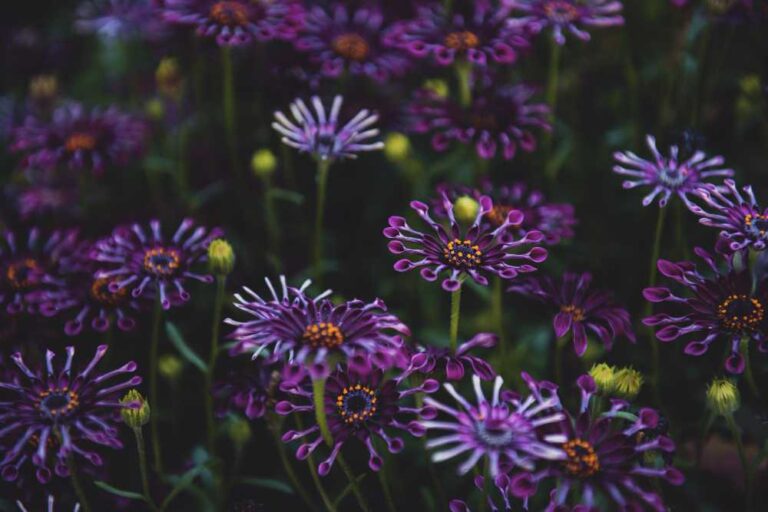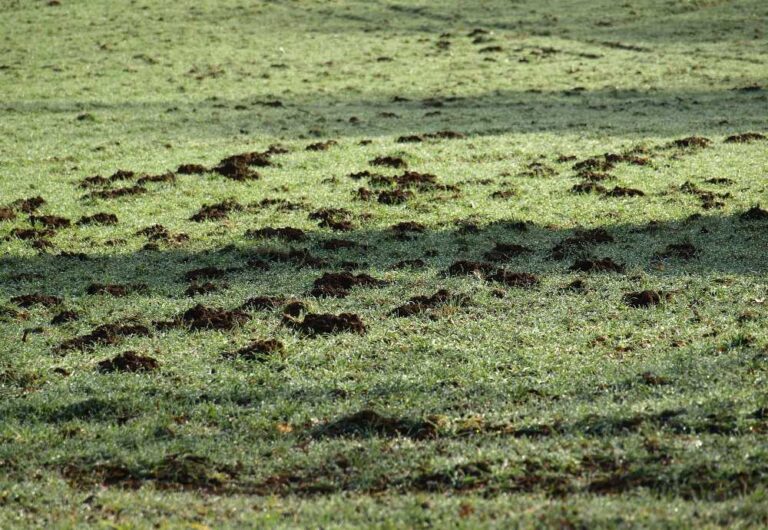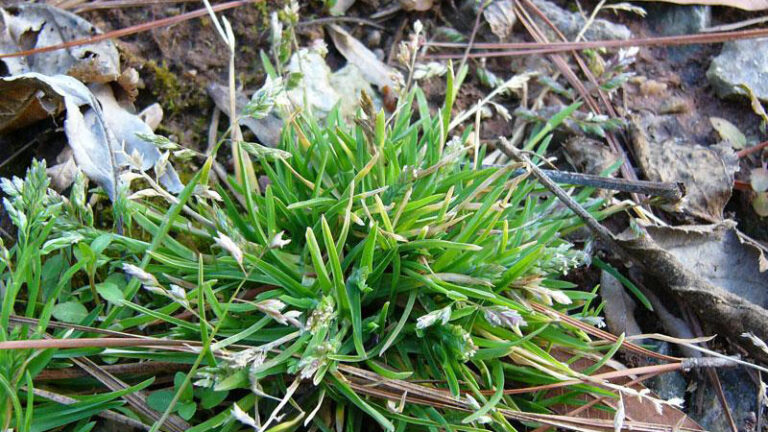15 Weeds That Look Like Trees
Weeds are often regarded as a nuisance in our gardens and landscapes, and while most of them are easily recognizable and easy to manage, some can be deceiving. These weeds that look like trees can be particularly challenging to identify and control, even for the most seasoned gardeners and landscapers. Invasive tree-like weeds, despite their deceptive appearances, their presence can adversely affect both the environment and agriculture.
15 Common Weeds That Look Like Trees
Below is a comprehensive list of 15 of the most common weeds that look like trees, shedding light on their characteristics, potential harm, and how to effectively manage them:
1. Tree of Heaven (Ailanthus altissima)
Also known as Ailanthus altissima, the Tree of Heaven is one of the most notorious weeds that look like trees. Its appearance often leads people to mistake it for a tree. Tree of Heaven can reach impressive heights of up to 80 feet, with compound leaves that resemble those of sumac or walnut trees. Its distinctive, pungent odor is another clue to its identity.
Despite its tree-like appearance, the Tree of Heaven is highly aggressive and can compete with native plants for resources. It’s essential to identify and manage this weed promptly to prevent it from spreading further. Effective control methods include cutting and herbicide application.
2. Black Locust (Robinia pseudoacacia)
The Black Locust, or Robinia pseudoacacia, is another weed that closely resembles a tree. Native to the southeastern United States, it features pinnately compound leaves and produces fragrant, drooping clusters of white flowers in the spring. These characteristics can easily lead gardeners to mistake Black Locust for a desirable tree species.
However, the Black Locust is an aggressive invasive species that can form dense thickets, crowding out native vegetation. Its strong root system can also be problematic as it competes with other plants for soil resources. To manage Black Locust, cut and remove the plants or apply herbicides selectively.
3. Russian Olive (Elaeagnus angustifolia)
Russian Olive is another notorious weed that looks like a tree. This tree-like weed can grow up to 30 feet in height and is particularly troublesome in North America, where it has invaded various ecosystems. Russian Olive features silvery-green leaves and small, fragrant yellow flowers, which contribute to its deceptive tree-like appearance.
The spread of Russian Olive can negatively impact native vegetation and water quality. Controlling this weed often involves cutting and removing the plants or using herbicides. Given its prolific seed production, you should act quickly to prevent further infestations.
4. Ricinus (Ricinus communis)
Also referred to as the castor bean plant, Ricinus is a woody shrub that grows up to 10 feet in height. Although not regarded as a tree, this weed can resemble a tree in appearance as it matures. Native to Africa, Ricinus is known for its distinctive, palmately lobed leaves and spiky fruit capsules that contain highly toxic seeds.
Nonetheless, Ricinus can become invasive in some regions, and its toxic nature, which includes the deadly toxin ricin, makes it a significant concern for both human health and the environment. Control measures involve physically removing the plants and ensuring the proper disposal of all plant parts to prevent further spread and environmental harm.
5. Bamboo (Phyllostachys spp.)
Bamboo is often considered an ornamental plant, valued for its graceful appearance and versatility. However, some species of bamboo, particularly those in the Phyllostachys genus, can become invasive and resemble small trees. These bamboo species can reach considerable heights, with tall, woody stems and leafy canopies that can easily be mistaken for tree growth.
Invasive bamboo can quickly spread, forming dense stands that outcompete native plants for light, moisture, nutrients, soil, and space. To manage invasive bamboo, use physical barriers to contain its spread or employ herbicides and regular pruning to keep it in check.
6. Mimosa Tree (Albizia julibrissin)
The Mimosa tree, or Albizia julibrissin, is a deciduous tree that’s often grown for its fragrant, pinkish-purplish flowers and fern-like leaves. However, this tree has a deceptive side. While prized for its ornamental qualities, the Mimosa tree can become invasive and self-seed prolifically. Its rapid growth and distinctive, umbrella-shaped canopy can lead gardeners to mistake it for a desirable tree.
In some regions, the Mimosa tree has escaped cultivation and invaded natural areas, competing with native species and altering local ecosystems. To manage these weeds that look like trees, it’s important to remove any self-seeded saplings and consider planting alternative, non-invasive trees for a similar aesthetic effect in your landscape.
7. Japanese Knotweed (Reynoutria japonica)
Japanese Knotweed, or Reynoutria japonica, is a highly invasive weed that can grow to resemble shrubs or small trees, reaching heights of 10 to 15 feet. It has heart-shaped leaves and produces small, greenish-white flowers. This weed is known for its incredibly aggressive root system, which can damage foundations, roads, and structures.
Japanese Knotweed can easily be confused with other woody plants, and its spread can have devastating consequences for the environment and property. Eradication of Japanese Knotweed is challenging and often requires professional help. Herbicides and excavation are common control methods, but ongoing monitoring and treatment may be necessary to ensure it doesn’t return.
8. Creeping Thistle (Cirsium arvense)
Creeping Thistle, scientifically known as Cirsium arvense, is a perennial herbaceous plant that can be mistaken for a small shrub or tree in its mature stages. Although native to Europe and Asia, Creeping Thistle has become an invasive weed in other regions like North America. These weeds that look like trees are known for their distinctive spiky leaves and pink to purple, thistle-like flowers.
This weed’s ability to spread rapidly through underground roots and vigorous growth makes it a significant problem for gardeners, farmers, and land managers. Creeping Thistle competes with desirable vegetation, reducing crop yields and impacting natural ecosystems. Effective control methods include regular mowing or cutting to prevent flowering and seed production, as well as the targeted use of herbicides.
9. Privet (Ligustrum spp.)
Privet is a shrub that can grow into a dense, tree-like thicket, often resembling small trees. Commonly used as a hedge plant, privet can escape cultivation and invade natural areas. It has simple, opposite leaves and small, white, fragrant flowers. Privet is particularly problematic in North America, where it outcompetes other plants for resources like water and nutrients and disrupts local ecosystems.
To control privet, regular pruning, and trimming can help prevent it from developing a tree-like appearance. Additionally, you can use herbicides to manage established privet thickets. Early detection and intervention are essential to keep this invasive species in check.
10. Golden Rain Tree (Koelreuteria paniculata)
The Golden Rain Tree is a deciduous tree with pinnately compound leaves and clusters of bright yellow flowers. It is often planted for its ornamental value but can become weedy and invasive in certain areas. As it matures, the Golden Rain Tree develops a tree-like form, making it appear as a desirable landscape tree.
Invasive populations of Golden Rain Tree can disrupt native ecosystems and outcompete native vegetation. To manage this weed, consider planting native trees and removing any self-seeded saplings. Regular pruning and monitoring can help prevent this species from spreading.
11. Paper Mulberry (Broussonetia papyrifera)
Paper Mulberry is a deciduous tree with distinctive lobed leaves and a spreading canopy. Although Paper Mulberry is sometimes planted for its unique leaves often used in papermaking and textile production, it is an invasive weed in various parts of the world.
This weed can often be mistaken for a desirable ornamental tree, especially when it’s grown in gardens. As Paper Mulberry can self-seed easily and establish itself in natural areas, it’s important to monitor for any unwanted seedlings and remove them promptly. For well-established trees, herbicides may be necessary to control their spread.
12. Porcelain Berry (Ampelopsis brevipedunculata)
Porcelain Berry, scientifically known as Ampelopsis brevipedunculata, is a woody vine that can easily be mistaken for a small tree. Native to Asia, it produces attractive, multicolored berries that can give it an ornamental appearance. However, this invasive vine has the potential to smother and outcompete native vegetation.
Porcelain Berry’s vigorous growth and ability to climb on trees and structures make it a troublesome weed. To manage it effectively, physically remove the vines and their root systems. Additionally, avoid planting or encouraging the growth of this invasive vine in your garden.
13. Silverthorn (Elaeagnus pungens)
Silverthorn is an evergreen shrub that can grow into a small tree-like form, often reaching heights of 15 feet or more. While Silverthorn is widely cultivated for its silvery-green leaves and fragrant, small flowers, it can escape cultivation and become invasive.
While Silverthorn may appear appealing, it can displace native vegetation and alter the landscape’s natural balance. To manage this weed, carefully prune and remove any self-seeded saplings. Preventative measures, like planting native species, can help reduce the spread of Silverthorn in your area.
14. Norway Maple (Acer platanoides)
The Norway Maple, scientifically known as Acer platanoides, is a deciduous tree native to Europe. It was introduced to North America as an ornamental tree due to its attractive, broad leaves and tolerance for urban conditions. While it is appreciated for its ornamental qualities, the Norway Maple has become invasive in some regions, particularly in the northeastern United States and parts of Canada.
This tree closely resembles native maples, which can make it challenging to identify as an invasive species. Invasive Norway Maples can shade out and starve other plants of nutrients, causing them to wither away. Therefore, early detection and management are essential to prevent its spread. Control methods may include removing invasive Norway Maples and replacing them with native tree species. Additionally, monitoring the spread of Norway Maples is vital to promote the growth of native plants.
15. Musk Thistle (Carduus nutans)
Musk Thistle, scientifically known as Carduus nutans, is a biennial or short-lived perennial thistle that can be mistaken for a small, spiky shrub or tree due to its mature size. It is native to Europe but has become an invasive weed in various parts of North America. Musk Thistle is characterized by its tall, spiky stems, spiny leaves, and distinctive, nodding purple flowers.
These weeds that look like trees spread rapidly and outcompete native vegetation, particularly in grasslands and open areas. Musk Thistle is a concern for agricultural and natural ecosystems as it can reduce forage quality for livestock and displace native plants. Effective control measures involve early detection and manual removal before flowering and seed production occurs.
The Bottom Line
Weeds that look like trees can be a significant challenge for gardeners, landscapers, and environmental stewards. While their deceptive appearances might initially fool us, it’s crucial to remain vigilant and proactive in identifying and managing these species. Invasive weeds that look like trees can outcompete native plants, disrupt ecosystems, and even damage property.
Regular monitoring and the use of appropriate control methods, such as cutting, herbicides, and barriers, are essential for effectively managing these weed species. By staying informed and taking swift action, you can protect natural landscapes and prevent these weeds that look like trees from gaining a foothold in your gardens and landscapes.






